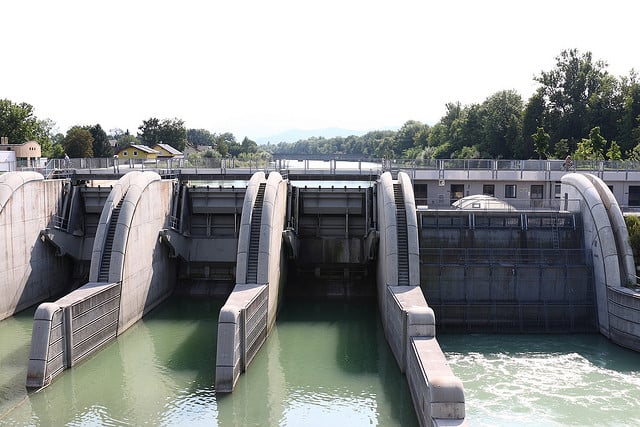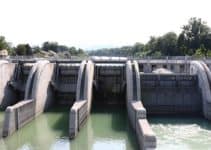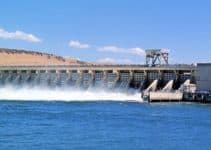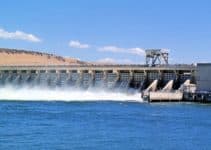The energy prospects are not looking bright with fossil-based sources of energy such as coal, oil and natural gas. This gloom prospect in conjunction with the ever expanding global population and the fast industrialization of third world economies leaves humans in grave danger of lack of energy in the future. If the current events continue unabated, there won’t be sufficient power to cater to humanity’s daily needs. Governments have acted swiftly to neutralize this threat by proposing wide-ranging solutions including putting more resources in the exploration of more oil, expansion of nuclear energy, enhancing research into energy-saving technologies, and an unprecedented investment in renewable energy. The latter can be divided into different areas, which encompasses wind power, solar power, and hydro power. Of the three, hydropower presents the best possibility for extensive adoption. This is evident by the numerous hydroelectricity production plants in operation.
Hydropower is energy generated by harnessing the natural force of water (kinetic energy). The energy is harnessed by hydroelectric systems and converted into electricity using a turbine and a generator. Hydropower is classified as a renewable source of energy because water supply is constantly replenished by the sun. This means that it is a never-ending resource. It’s also eco-friendly because it doesn’t emit greenhouse gasses to the atmosphere that contribute mightily to pollution and global warming. China boasts the largest producer of hydropower today, followed by Canada, Brazil and the U.S. Because of its abundance, hydropower is projected to be the dominant energy resource in the world for many years to come.
How do Hydropower Plants Work?
To produce hydroelectricity, three things must be present; moving water, a turbine, and a generator. Hydropower stations are designed to harness the kinetic energy from moving water. Ideally, they are factories that convert the energy of falling water into the flow of electrons, commonly known as electricity. In most scenarios, a dam is constructed across a river to elevate the water level and offer the fall needed to develop a driving force. The falling water is then channeled to a turbine wheel at a lower level. The flowing water turns a turbine wheel that is connected to a generator. The generator has a rotor, which is turned by the turbine. The turning of the generator rotor produces electricity.
The functioning of a generator is pegged on the principles revealed by Faraday. His discovery states that when a magnet is moved past a conductor, it triggers electrons to flow. In a large-scale hydroelectric generator, electromagnets are created by circulating direct current via wire loops that are wrapped around heaps of magnetic steel laminations known as field poles. The field poles are mounted on the perimeter of the rotor. The rotor is connected to the turbine shaft and spins at a set speed. When the rotor spins, it triggers the electromagnets (field poles) to go beyond the conductors mounted in the stator, causing electrons (electricity) to flow and a voltage to occur at the output terminals of the generator.
The electricity produced is then stepped up in voltage through the hydroelectric power station transformers and sent across transmission lines. The used water having performed its intended purpose is channeled out of the power generation station to the mainstream of the river to continue the cycle of power generation.
Types of Hydropower Plants
Numerous hydropower plants exist today. Their classification relies on the net volume and flow of water. The classifications also hinge on the availability of area to set up the power plant and the amount of capital injected into the project. However, the three main kinds of hydropower plants include impoundment facility, river-diversion, and pumped storage hydro plant. Let’s look at them comprehensively:
- Impoundment Facility
This is the most popular type of hydroelectric power plant. An impoundment facility is, essentially, a large hydropower system that utilizes a dam to store vast amounts of river water in a reservoir. The pile of water exiting from the reservoir is channeled via a turbine causing it to rotate. The rotating turbine activates a generator to generate electricity. The water might be released for two main reasons; to match varying electricity needs or to ensure the reservoir maintains constant water level.
- River diversion
This kind of hydropower plant is sometimes known as run-of-river. The term run-of-river pops to mind imageries of small turbines spinning in a river to produce low-impact electricity. However, the term ‘’river diversion” tends to define these projects more accurately. Diversion involves production of electricity by diverting a huge portion (about 90%) of any flow of river into a pipeline or tunnel to turn turbines before channeling the water back to the mainstream of the river. In this model, turbines are not set up in the river itself.
River diversion projects differ in magnitude. However, each project requires substantial infrastructure such as:
- A dam to develop a small-sized reservoir called head pond
- A tunnel or pipeline, referred to as penstock, constructed to be several kilometers in length to draw water from the headpond to the turbines.
- A fortified powerhouse building for storage of generators
- A tailrace tributary through which used water exits the power plant
- Well constructed access roads to the powerhouse and headpond
- Transmission lines originating from the powerhouse to the adjacent BC Hydro transmission line
- In few occasions, an electrical substation
River diversion hydropower plants have less impact on the environment compared to the traditional hydroelectric projects that demand huge dams and reservoirs. However, a huge collection of river diversion projects can greatly impact the environment.
- Pumped storage hydropower
This hydropower plant type works a lot like a battery. It stores up electricity produced by other energy sources such as wind, solar and nuclear to be utilized later. This technology works by pumping up water to a higher level reservoir from a lower level reservoir. The pumping of water to high elevation reservoir happens when demand for electricity is at its lowest. When demand for electricity skyrockets, the water is allowed to flow back to the lower reservoir to spin a turbine and produce electricity.
Offshore hydropower
This is a less explored kind of hydropower system that utilizes power of waves or tidal currents to produce electricity. It has a great advantage in that no piece of land is dedicated to its installation.
Hydroelectric power plants are also classified in terms of size including:
- Micro hydropower plants
This is the smallest hydropower plant and has the capacity to produce about 100 kilowatts of power. It’s able to supply enough electricity for a village, home, farm or ranch.
- Small hydropower plants
These are hydroelectric power projects that have the capacity to generate at most 10mega watts of power
- Large hydropower plants
These are hydropower projects that have the capacity to produce at least 30 megawatts of power.
Hydropower is the most efficient and convenient method of electricity generation. Contemporary hydro turbines are so innovative that they are able to convert more than 90% of available energy into electricity. This is way better when compared to the best fossil fuel facility, which is only 50% efficient. Hydroelectric power plays a critical role in the modern day electricity mix, attributing to over 16% of electricity generation across the globe. Although other renewable sources of energy such as solar, wind and geothermal are fast gathering steam, hydropower is expected to power most world economies for many years to come.



